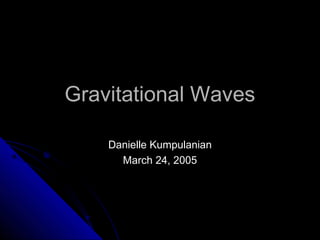The document discusses gravitational waves and their significance, highlighting Einstein's predictions and various experiments confirming general relativity. It details the operation and goals of the LIGO observatory, which aims to directly measure gravitational waves and advance our understanding of astrophysical phenomena. The text also outlines other detectors, the unique characteristics of gravitational waves, and their potential to uncover new insights into the universe.


































